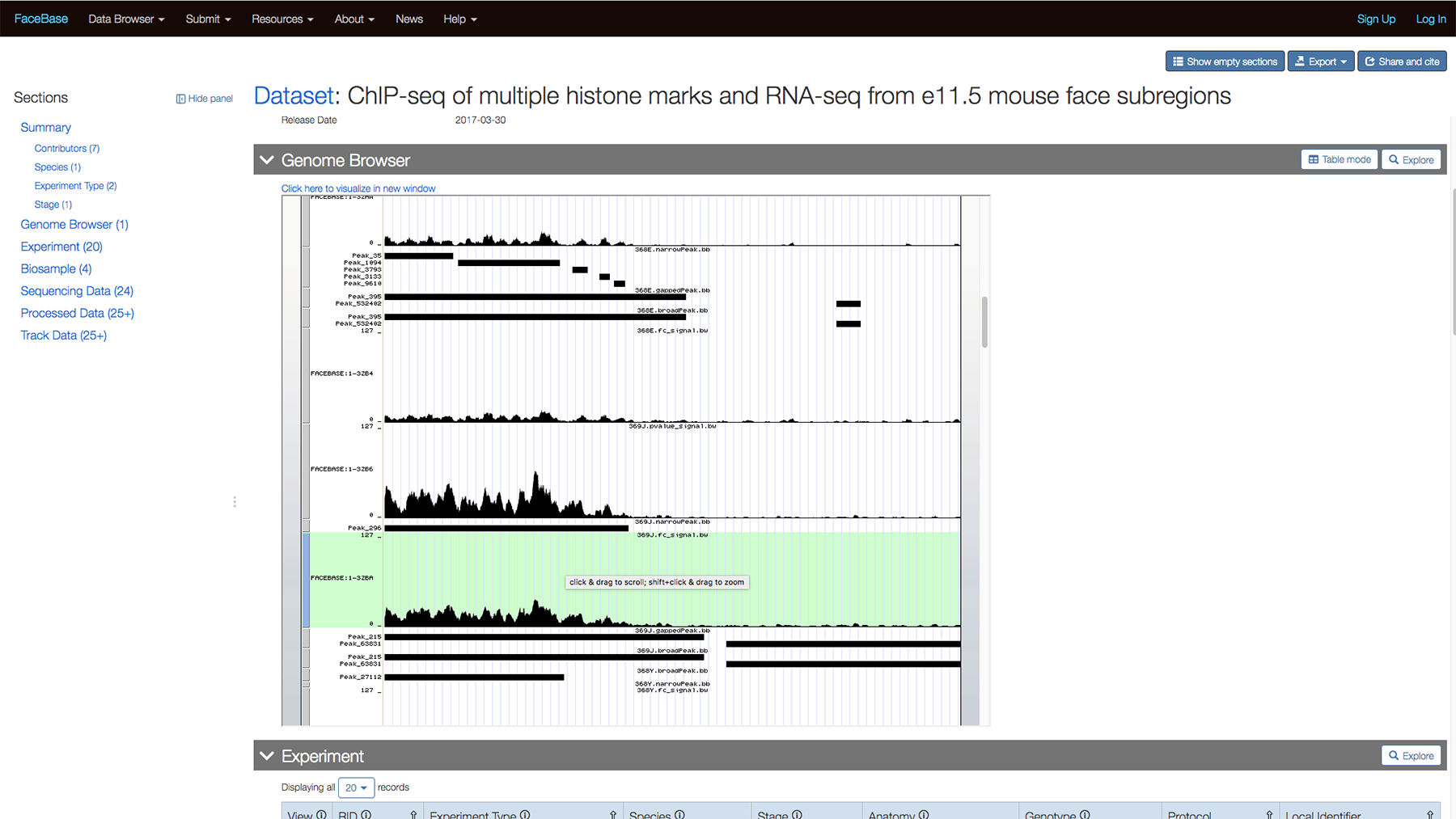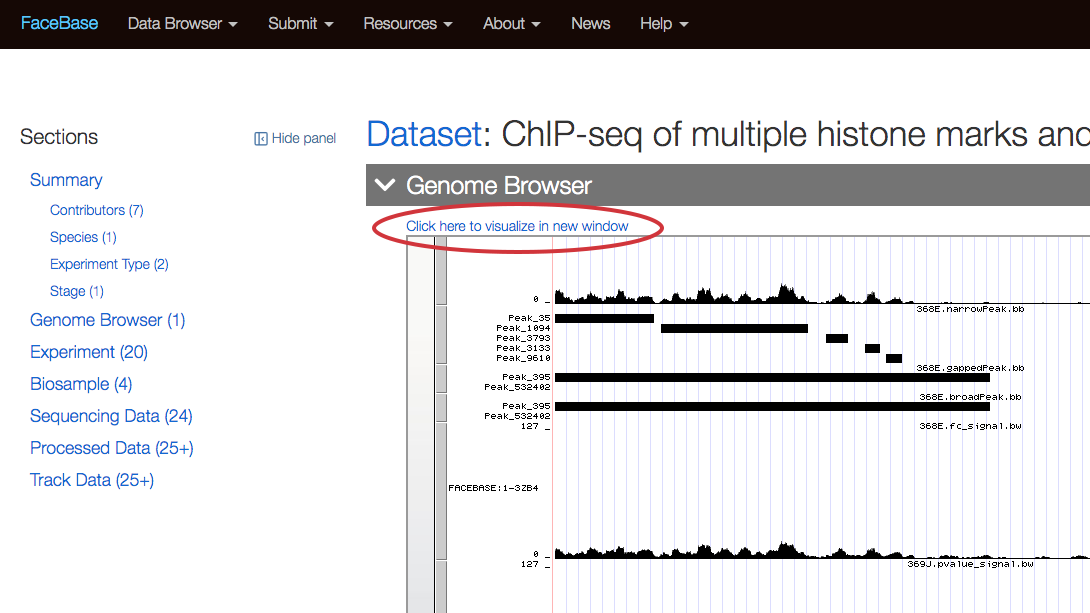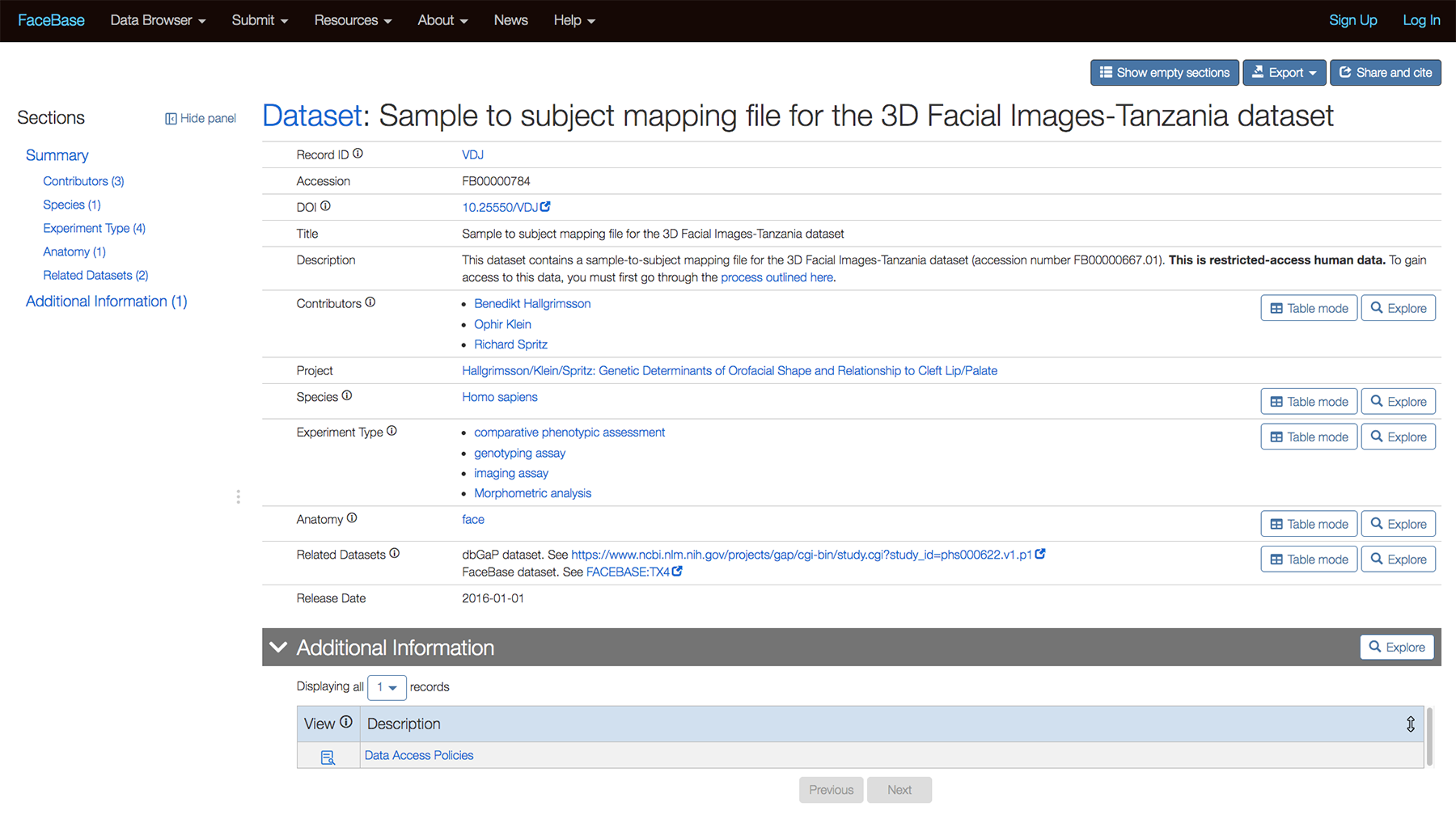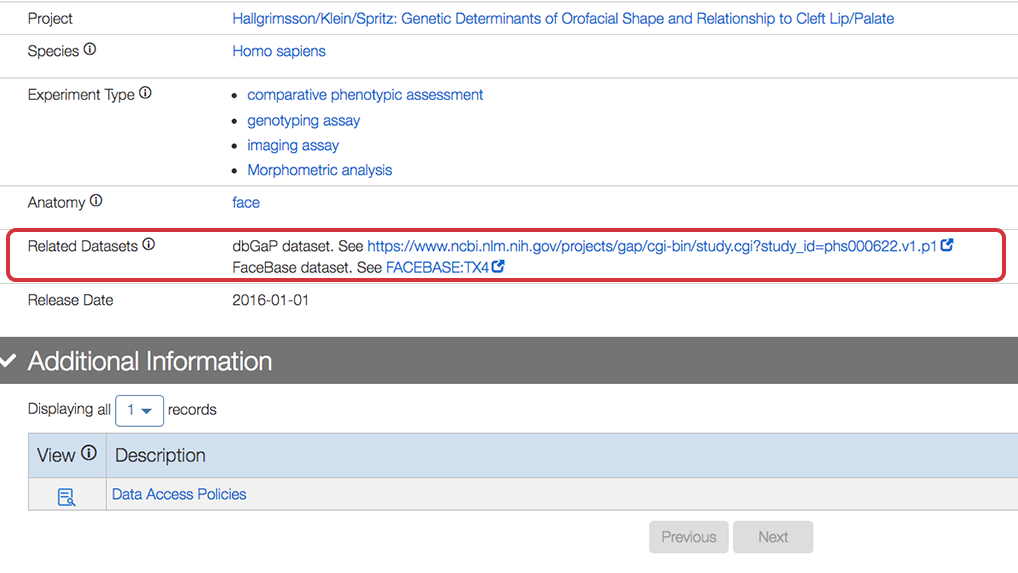News & Events
First FaceBase Bootcamp for Data Submitters on July 22nd (08 June 2020)
We are inviting all craniofacial researchers who are interested in submitting data to the FaceBase website to join us for the first FaceBase Bootcamp for Data Submitters.
Our original intention was to be able to provide travel funding for labs to send data submitters for first hand training. Due to the Covid-19 we weren’t able to do so this year (sign up for a FaceBase account to be notified about such opportunities in 2021!) we have decided to hold this bootcamp virtually.
When?
Wednesday July 22, 2020
9am to 2pm Pacific / Noon to 5pm Eastern
Where?
ZOOM (details will be emailed to registrants) with replay videos available after the event
What?
Two-part agenda:
- Overview submission and curation process; applying data model concepts; how to install tools,
- Hands on tutorial with sample data (sequencing and imaging), hands on exercises and Q&A for your own data.
How?
Just click this link for details and how to register: https://www.facebase.org/bootcamp/
If you have any questions, please send them to help@facebase.org.
FaceBase at the Gordon Conference (05 March 2020)
Members of the FaceBase Hub attended the 2020 “Craniofacial Morphogenesis and Tissue Regeneration” Gordon Research Conference in Lucca (Barga) Italy last week and talked to many FaceBase users who were interested in using and submitting data.
PIs, Yang Chai and Carl Kesselman, along with data project leader, Rob Schuler, attended this prestigious annual meeting typically attended by graduate students, post-docs, and young career scientists as a breeding ground for sharing information and innovative ideas in the craniofacial research domain.
Chai, Kesselman and Schuler had the opportunity to interact with many FaceBase users who were enthusiastic in learning about how to submit data to the repository, provided positive feedback and shared interesting ideas for presenting our data.
The Hub also hosted an information session that was highly attended and very interactive. You can access the presentation here.

Genome Browser Integration, Related Datasets and More New Features on FaceBase (28 January 2020)
We have updated the Data Browser by integrating the UCSC Genome Browser directly in the record pages, including a section of related datasets (providing the ability to link to related FaceBase datasets and external sources such as dbGap or GEO) and upgrading the look and feel.
UCSC Genome Browser Integration
For sequencing datasets that include track data, FaceBase updates our trackhub nightly with any newly released track data. We also integrate the GB visualization right in the dataset’s record page.
For example, the screenshot below shows the detail page for the ChIP-seq of multiple histone marks and RNA-seq from e11.5 mouse face subregions dataset. You can see the Genome Browser section below the Summary.

You can scroll down further to view the data while still on the page.

Or click “Click here to view visualization in new window” to view the track on the UCSC Genome Browser.

Related Datasets section
We can now indicated datasets that are related to each other, whether in FaceBase or another repository such as dbGAP via the “Related Datasets” section. The following example is from the detail page for Sample to subject mapping file for the 3D Facial Images-Tanzania dataset.

The following is a closeup of the entries for the Related Datasets section:

Updated User Interface for the Data Browser
As a result of extensive usability testing, we’ve made some foundational changes to the style and layout of the Data Browser as you can see in the above screenshots. These changes focused on making content in the Data Browser easier to read and to standardize layout and formatting elements. For example, the section headers on a detail page are much more prominent, more distinguishable from the rest of the content and easier to scan.
Announcing FB3 - Downloads no longer require sign-in, we're accepting data from the community! (07 November 2019)
We are happy to officially announce the third phase of FaceBase! This new phase kicked off in early fall and we are hard at work on many changes over the next five years that will make FaceBase an even more open and useful resource for the community. But for now here are the two biggest updates:
Opening up data submissions
The former hub and spoke format of the previous two versions of FaceBase is no more. We still have the Hub as the coordinating center and innovators of the data repository, but we no longer have a select group of projects (the spokes). Instead we are opening our repository to the craniofacial research community to help enhance our already rich data offerings.
If you have data that you think the community would find useful, please fill out this form to tell us about yourself and your data.
Downloads without login
We no longer require you to have a membership and be logged in to download our data (except for controlled-access human data, of course). This is a major shift designed to make it even easier and more seamless for our users to get the data you need for your research when you need it.
We do still encourage you to sign up for our newsletter - membership does have its privileges, such as keeping you updated on new features and new data and learning about the many exciting events we’ll be planning in the future.
Slides and Videos available from the 2019 Final Recap Webinar (22 May 2019)
Thank you to so many people who attended our webinar on Monday. We had about 86 attendees overall and over half of those came from outside the consortium! That indicates a lot of interest in the kind of resource FaceBase has become for craniofacial research.
We’ve posted presentations and videos from May 20th that have been approved for public viewing.
If you are interested in keeping in touch with the FaceBase Hub for any future news about FaceBase as a resource, sign up for a FaceBase account, or subscribe to our newsletter.

